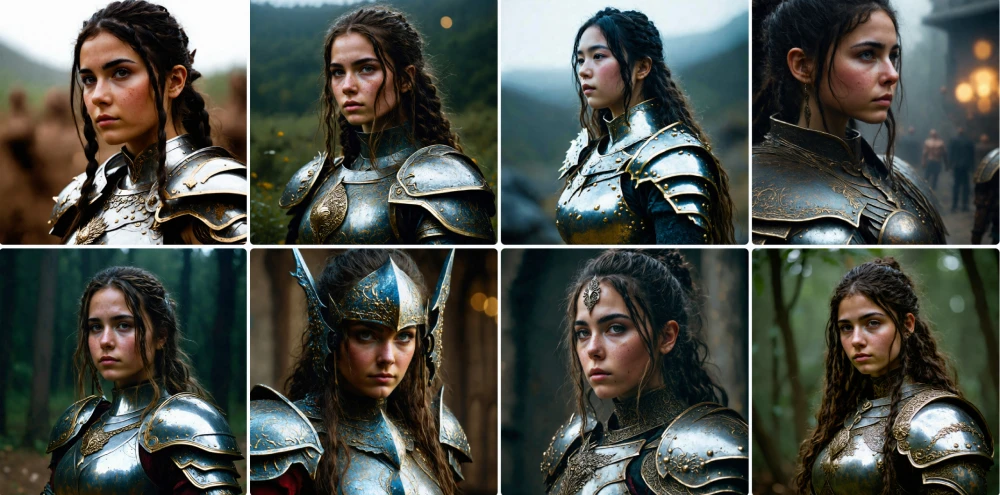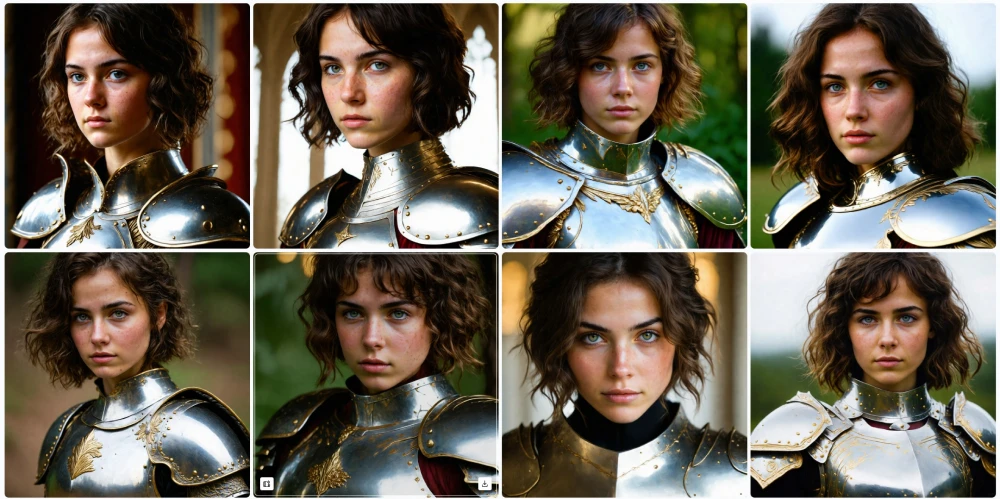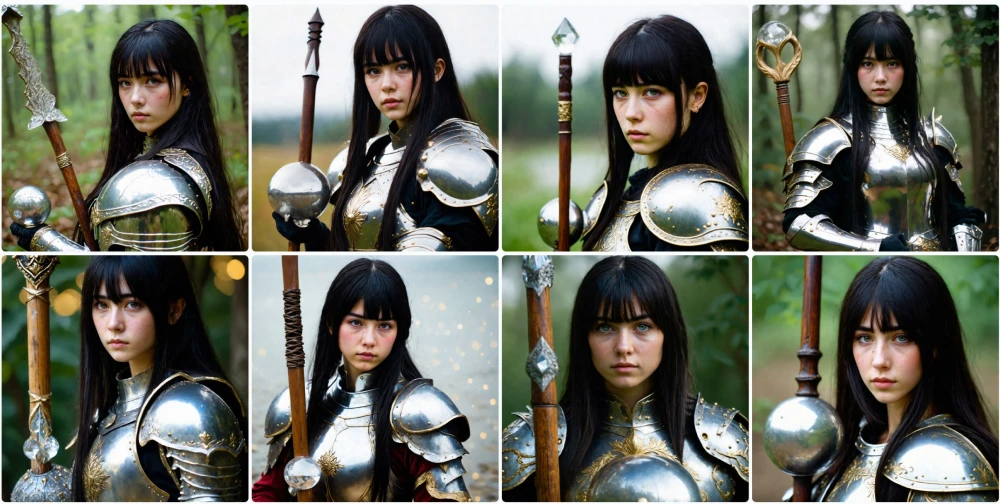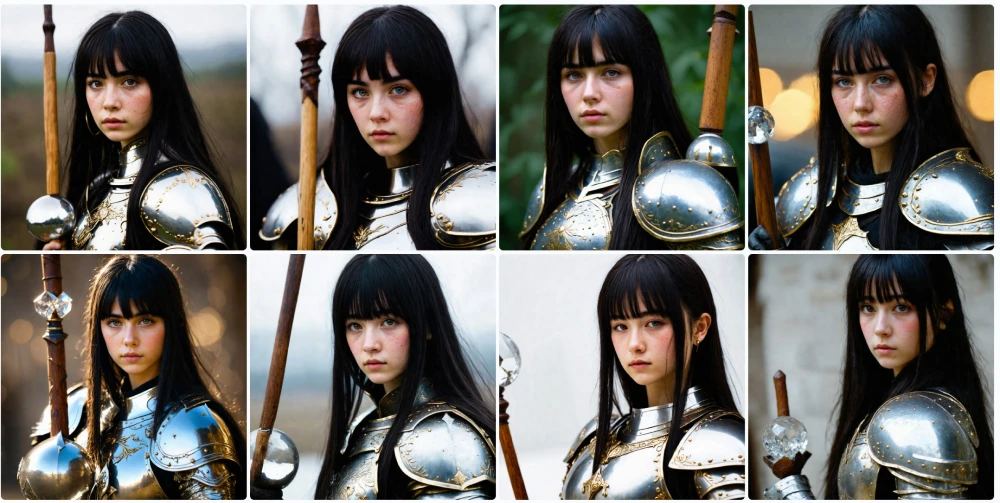AI-driven video production is breaking down the traditional stages of pre-production, production, and post-production. It expands both efficiency and creativity, yet consistency continues to be a major challenge.
Why Is Consistency Important?
If backgrounds, characters, costumes, or props keep changing across scenes, it not only feels awkward but also undermines the story’s credibility and the audience’s immersion. This aligns with the core principle of continuity editing in traditional filmmaking.
The Importance of Identifying the Same Character
Viewers stay engaged with a story when a character looks the same from scene to scene. The challenge with AI models is that they can sometimes produce different results even when given the same prompt.
For example, a protagonist might be described in one scene with long black hair and blue eyes, but then appear in the next scene with short brown hair. Even small changes like this break continuity and make it harder for the audience to see them as the same character, which disrupts the flow of the narrative.
Technical Limitations and Challenges
This issue comes from the probabilistic nature of generative models, which can produce slightly different outputs even with the same instructions. Achieving consistency requires more than writing prompts. It often involves careful prompt design, the use of reference images, and post-production steps such as color grading and face consistency checks.
In AI video production, consistency should be treated as a directorial strategy rather than just a technical detail. By approaching it this way, creators can keep audiences fully immersed and ensure the final product feels complete and professional.
Principles of Prompt Design
The key to maintaining consistency in AI-generated images (or videos) is providing the model with clear, detailed instructions on what exactly to depict. Text-to-image models parse prompts token by token, and the choice of emphasized keywords strongly affects the output.
When reproducing the same character across multiple scenes, it is essential to repeatedly specify their defining traits (e.g., hair color, hairstyle, eye color, skin tone, body type, facial expression). This helps the model “understand” that these features must remain constant.
Even so, perfect consistency is not guaranteed. However, well-controlled prompts are the foundation for higher consistency.
Example: Vague Prompt (prone to inconsistency)
A woman warrior in fantasy armor

This prompt is too broad. Hair length, hair color, eye color, or armor design may vary significantly each time.
Example: Detailed Prompt
Hailey, a female knight with short wavy brown hair and emerald green eyes, wearing a silver breastplate with gold engravings, a calm but determined expression.

Here, hairstyle, hair color, eye color, armor details, and expression are all clearly specified. Copying and pasting such a structured prompt for subsequent scenes will likely produce similar-looking outputs, with variations mostly in background or pose.
Key Features to Define for Character Consistency
1. Hair
Hair is one of the strongest identity markers in prompts. Include:
- Color: brown, black, blonde, red
- Length: short bob, shoulder-length, waist-length
- Style: curly, wavy, straight, afro
Examples:
- “afro blonde hair”
- “long straight black hair with bangs”
- “curly blonde hair in a high ponytail”
Applied Example:
Hailey, a female knight with afro blonde hair and emerald green eyes, wearing a silver breastplate with gold engravings, a calm but determined expression.

2. Eyes and Skin Tone
Eyes and complexion play a critical role, especially in close-ups.
- Eye Colors: green, brown, blue, purple
- Skin Tones: pale skin, tanned skin, dark brown skin
Examples:
- “emerald green eyes”
- “bright blue eyes, pale skin”
- “dark brown eyes, lightly tanned complexion”
Applied Example:
Hailey, a female knight with long straight black hair with bangs and bright blue eyes, pale skin, wearing a silver breastplate with gold engravings, a calm but determined expression.
.webp)
3. Clothing and Props
If the main character’s outfits frequently change, minor variations may be acceptable. But if there is a signature costume or prop, include it in the prompt every time.
Examples of distinctive attire:
- Knight’s armor
- Wizard’s robe
- Modern business suit
- Cowboy outfit
Props: sword, staff, gun, headphones, etc.
Applied Example:
Hailey, a female knight with long straight black hair with bangs and bright eyes, pale skin, wearing a silver breastplate with gold engravings, carrying a wooden staff with crystal orb, a calm but determined expression.

4. Expressions and Atmosphere
Facial expressions and overall mood also help maintain consistency.
- Expressions: gentle smile, serious, angry, sad
- Moods: calm but determined, mysterious, cheerful
Applied Example:
Hailey, a female knight with long straight black hair with bangs and bright eyes, pale skin, wearing a silver breastplate with gold engravings, carrying a wooden staff with crystal orb, a soft but determined expression.

Practical Workflow Tips
1. Use Character Sheets
Generate multiple angles and expressions (front, side, back, smiling, serious, etc.) to create a simplified character sheet. This provides consistent reference points, reducing visual discrepancies across scenes.
2. Template & Reuse
Treat fixed prompts as production assets. Define key attributes (hair, eyes, skin, outfit, expression) in a base prompt template, then only modify the background or context.
Base:
...a calm but determined expression
Extended:
...a calm but determined expression, riding a white horse across a battlefield
This ensures character continuity while supporting diverse scenes.
3. Post-Production Adjustments
Even with precise prompts, minor inconsistencies will appear. Strengthen consistency in post-production:
- Color Grading: Apply LUTs or tools to unify color tones across scenes.
- Face Consistency Check: Ensure facial structure and expression remain stable across frames, particularly in action sequences.
Summary
- Character Sheet: Prepare multiple angles and expressions to establish visual standards.
- Template-Based Prompts: Manage fixed prompts as assets and expand them by context.
- Post-Production: Use color grading and face adjustments to finalize uniformity.
Maintaining consistency in AI video production is not a technical luxury but a strategic necessity. By applying these principles, narratives and characters remain seamless, maximizing audience immersion. Tools like AI Studios make it easy to integrate these strategies directly into production workflows, boosting both efficiency and quality.



